
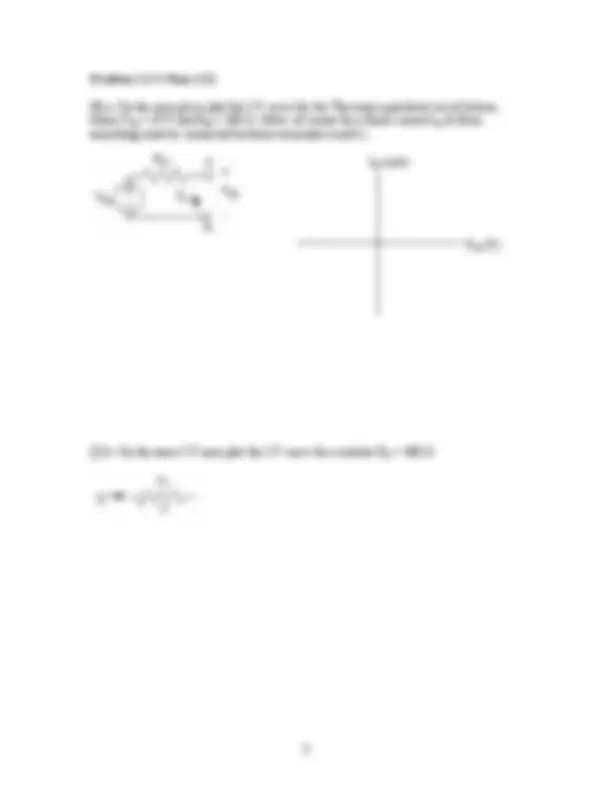
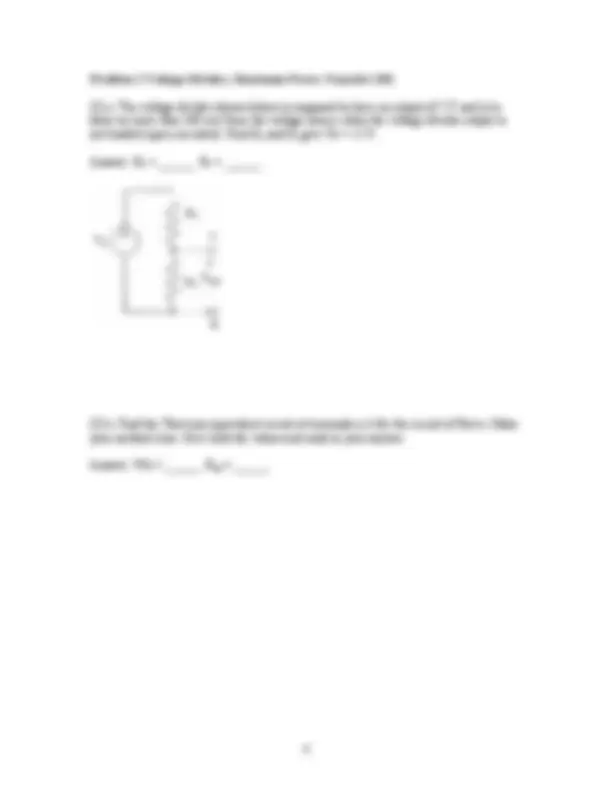
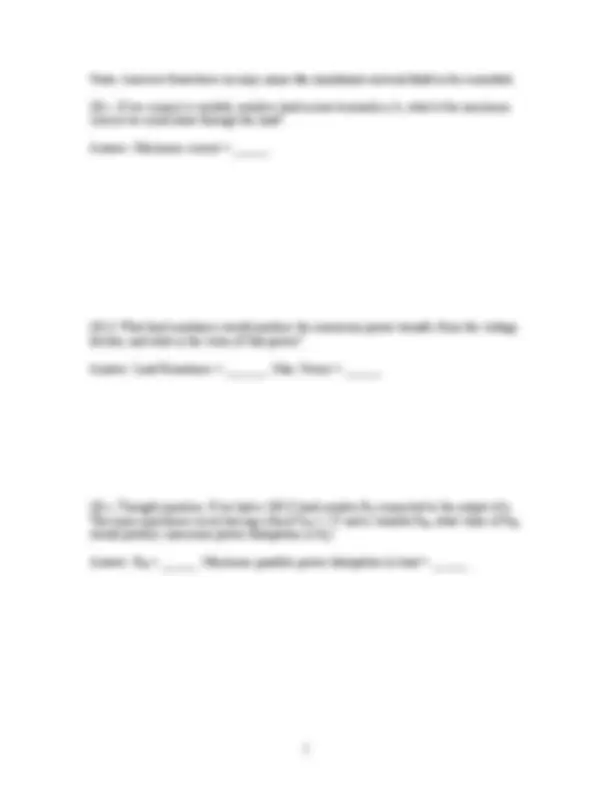
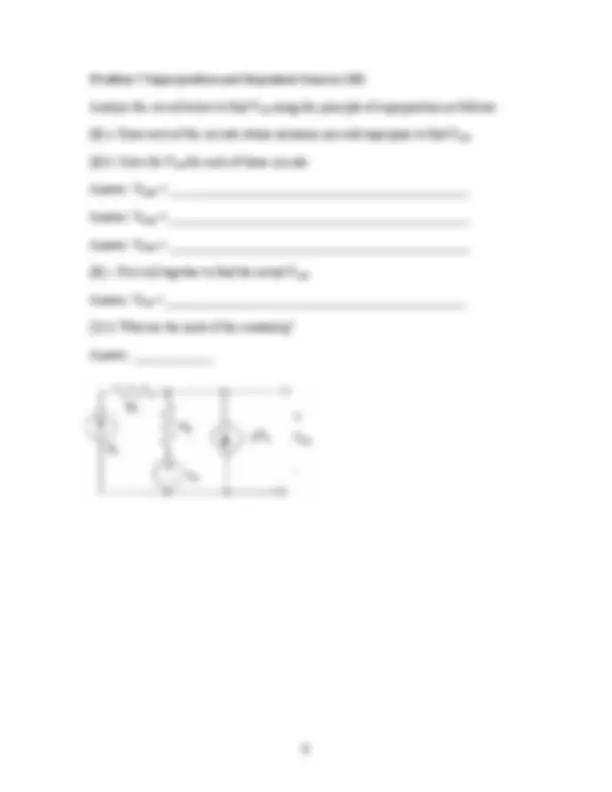
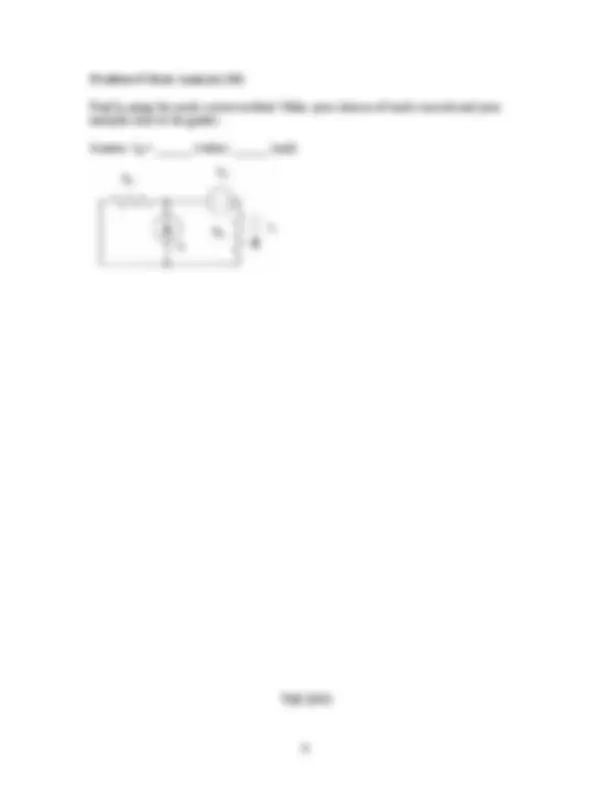


Study with the several resources on Docsity

Earn points by helping other students or get them with a premium plan


Prepare for your exams
Study with the several resources on Docsity

Earn points to download
Earn points by helping other students or get them with a premium plan
Community
Ask the community for help and clear up your study doubts
Discover the best universities in your country according to Docsity users
Free resources
Download our free guides on studying techniques, anxiety management strategies, and thesis advice from Docsity tutors
Main points of this exam paper are: General, Voltage Drop, Current-Carrying Resistor, Voltmeter, Positive Terminal, Negative Terminal, Circuit Elements
Typology: Exams
1 / 9

This page cannot be seen from the preview
Don't miss anything!






Print Name __________________________________________________________
Sign Name ___________________________________________________________
Total /
Problem 1 General Questions [6]
[1] To measure the voltage drop of a current-carrying resistor you put your voltmeter in series with the resistor. True ___ False ___
[1] The amount of current flowing in a resistor decreases linearly as we go from its positive terminal to its negative terminal. True ___ False ___
[1] The equivalent circuit for three inductors in parallel is like that for three resistors in parallel except that L’s replace R’s. True ___ False ___
[1] List the circuit elements that are linear: ___________________________________
[1] List the circuit elements that dissipate energy: ______________________________
[1] The conductance of a 47 Ω resistor is _____________ (value) __________ (unit)
Problem 3 Voltage Divider, Maximum Power Transfer [20]
[5] a. The voltage divider shown below is supposed to have an output of 5 V and is to draw no more than 100 mA from the voltage source when the voltage divider output is not loaded (open-circuited). Find R 1 and R 2 give Vs = 12 V.
Answer: R 1 = ______ R 2 = ______
[5] b. Find the Thevenin equivalent circuit at terminals a, b for the circuit of Part a. Make your method clear. Give both the values and units in your answer.
Answer: Vth = ______ Rth = ______
Note: Answers from here on may cause the maximum current limit to be exceeded.
[4] c. If we connect a variable resistive load across terminals a, b, what is the maximum current we could draw through the load?
Answer: Maximum current = ______
[4] d. What load resistance would produce the maximum power transfer from the voltage divider, and what is the value of that power?
Answer: Load Resistance = _______ Max. Power = ______
[4] e. Thought question: If we had a 100 Ω load resistor RL connected to the output of a Thevenin equivalent circuit having a fixed Vth = 2 V and a variable Rth , what value of Rth would produce maximum power dissipation in RL?
Answer: Rth = ______ Maximum possible power dissipation in load = ______
Problem 5 Power [12]
Find the power that is either dissipated in or delivered by the current source I0 in the circuit below, and determine whether the power is dissipated or delivered. Make your methods clear to the grader. Given V 0 = 5 V; I 0 = 2 mA; R 1 = 1 kΩ; R 2 = 2 kΩ.
Answer: Power dissipated/delivered (circle one) is ______ (value) ______(unit)
Problem 6 Circuit Fragment [5]
A resistor in a portion of a very large circuit is shown. Find the current IR given R 7 = 100 kΩ; V 3 = 2 V; I 0 = 5 mA; I 1 = -15 mA; I 3 = 25 mA; I 5 = 40 mA.
Answer: I (^) R = ______
Problem 7 Superposition and Dependent Sources [20]
Analyze the circuit below to find Vout using the principle of superposition as follows:
[6] a. Draw each of the circuits whose solutions you will superpose to find Vout.
[6] b. Solve for Vout for each of those circuits.
Answer: Vout1 = __________________________________________________
Answer: Vout2 = __________________________________________________
Answer: Vout3 = __________________________________________________
[6] c. Put it all together to find the actual Vout.
Answer: Vout = __________________________________________________
[2] d. What are the units of the constant g?
Answer: _____________